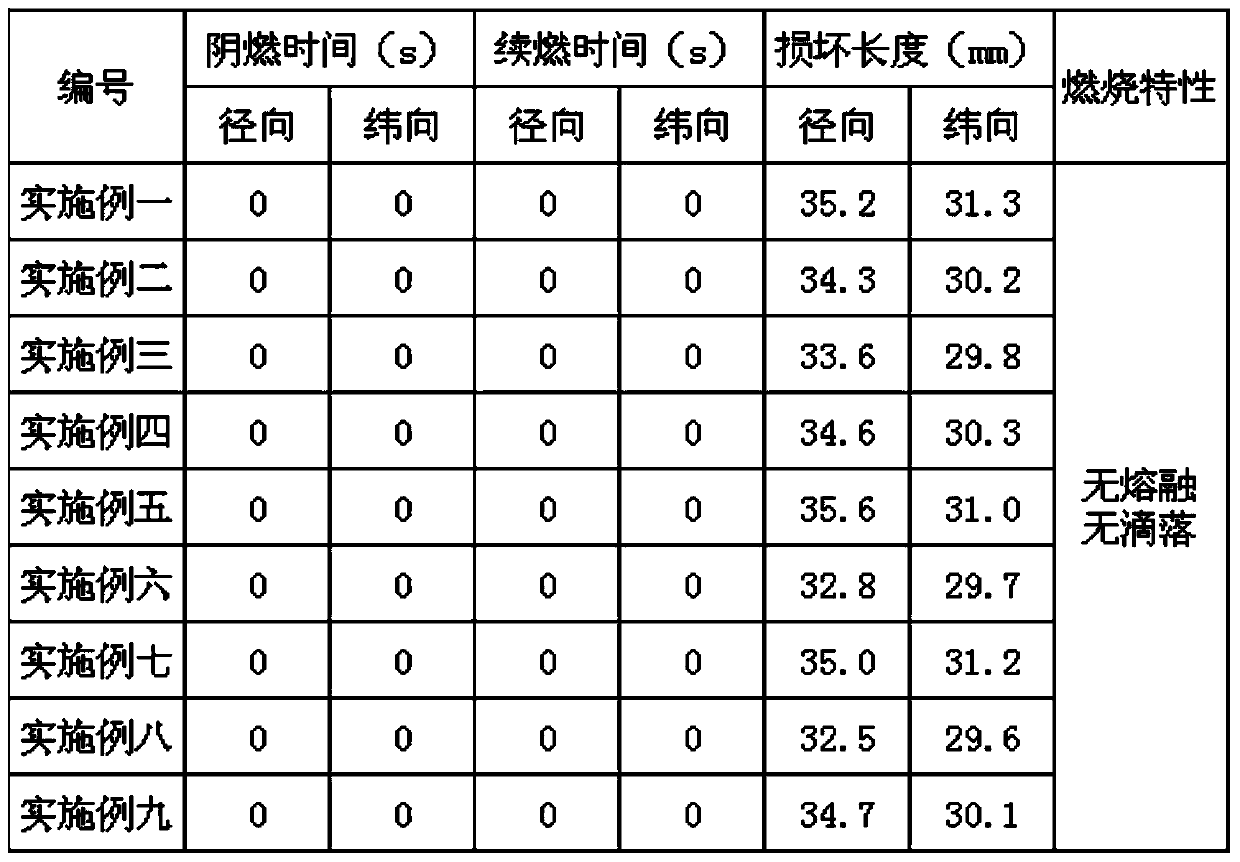Manufacturing method of pure-cotton flame-retardant protective clothing
A production method and technology of protective clothing, which can be applied to protective clothing, protective devices against harmful chemicals, clothing, etc., can solve problems such as increased cost, poor flame-retardant and heat-insulating performance, and high prices of flame-retardant clothing. Achieve good flame retardant performance and avoid waste
- Summary
- Abstract
- Description
- Claims
- Application Information
AI Technical Summary
Problems solved by technology
Method used
Image
Examples
Embodiment 1
[0027] Follow the steps below to make flame retardant clothing:
[0028] (1) Measure the shrinkage ratio of the cotton cloth: wash the cotton cloth with a length of A and a width of B in water, add a desizing agent to the water, and the proportions of the cotton cloth, desizing agent and water are 8:1.2:200, The water temperature is 70°C, and the washing time is 20m; then the washed cotton cloth is dried, and then dried at a temperature of 110°C, and the length X and width Y of the dried cotton cloth are measured, and the shrinkage ratio in the length direction is calculated K1=X / A, width shrinkage ratio K2=Y / B;
[0029] (2) Garment making: The length of the prefabricated clothes is L and the width is H, and the cotton cloth is cut according to the dimensions calculated by L / K1 and H / K2, and then sewn into clothes;
[0030] (3) Desizing and drying: Add clothes and desizing agent to water at a temperature of 70°C. The proportion of clothes, desizing agent and water is 8:1.2:20...
Embodiment 2
[0035] The difference between this embodiment and Embodiment 1 lies in the following steps:
[0036] (1) In the step of measuring the shrinkage ratio of cotton cloth: the proportion of cotton cloth, desizing agent and water is 9:1.2:200 in sequence, the water temperature is 80°C, and the washing time is 25m; then dry at a temperature of 125°C;
[0037] (3) In the steps of desizing and drying: the proportion of clothes, desizing agent and water is 9:1.2:200 in turn; add clothes and desizing agent in water at a temperature of 80°C, wash 25m, remove the clothes and shake Dry, and then dry, the drying temperature is 125 ℃;
[0038] (4) In the step of soaking the flame retardant: add the flame retardant to water at a temperature of 100°C to make a solution. carry out secondary drying;
[0039] (5) In the step of ironing and shaping: the baking temperature is 190°C, the baking time is 15m, and then it is cooled at room temperature for 25m to prepare the flame-resistant clothing. ...
Embodiment 3
[0041] The difference between this embodiment and Embodiment 1 lies in the following steps:
[0042] (1) In the step of measuring the shrinkage ratio of cotton cloth: the proportion of cotton cloth, desizing agent and water is 10:1.2:200 in sequence; the water temperature is 65°C, and the washing time is 15m; then dry at a temperature of 105°C;
[0043] (3) In the steps of desizing and drying: add clothes and desizing agent into water at a temperature of 65°C, the proportion of clothes, desizing agent and water is 10:1.2:200 in turn; after washing for 15m, remove the clothes and shake Dry, then dry, the drying temperature is 105 ℃;
[0044] (4) In the step of soaking the flame retardant: add the flame retardant to water at a temperature of 85°C to make a solution, the proportion of the flame retardant to water is 1:8; soak it for 35m, remove it, and then soak it at a temperature of 105°C carry out secondary drying;
[0045] (5) In the step of ironing and shaping: the baking t...
PUM
 Login to View More
Login to View More Abstract
Description
Claims
Application Information
 Login to View More
Login to View More - R&D
- Intellectual Property
- Life Sciences
- Materials
- Tech Scout
- Unparalleled Data Quality
- Higher Quality Content
- 60% Fewer Hallucinations
Browse by: Latest US Patents, China's latest patents, Technical Efficacy Thesaurus, Application Domain, Technology Topic, Popular Technical Reports.
© 2025 PatSnap. All rights reserved.Legal|Privacy policy|Modern Slavery Act Transparency Statement|Sitemap|About US| Contact US: help@patsnap.com

